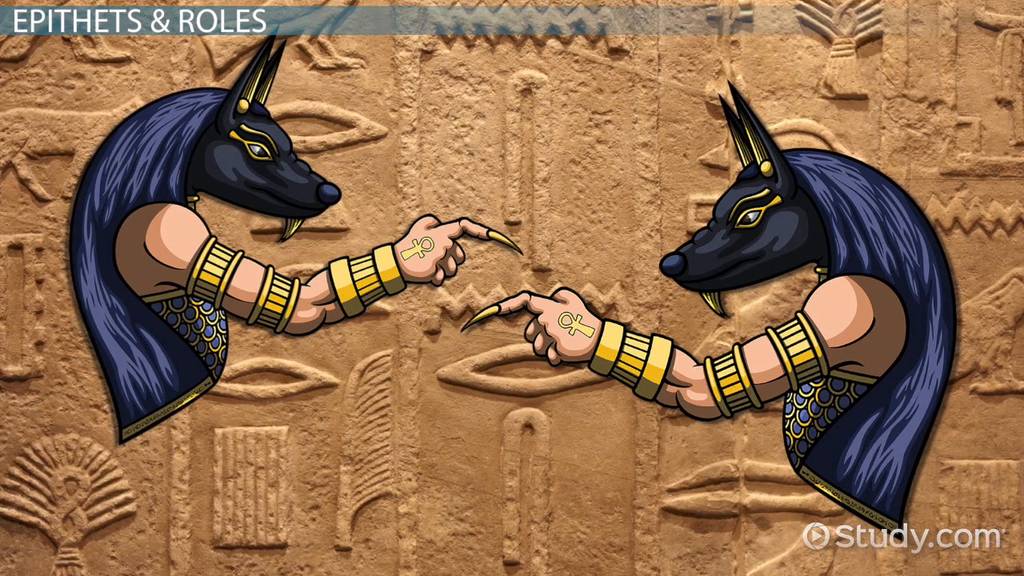Anubis, the Egyptian god of death and mummification, differs from Hades, the Greek god of the underworld, in mythology, symbolism, and cultural significance. While Anubis guides souls through the afterlife and is associated with mummification, Hades governs and controls the dead and judges them. Anubis is often depicted as a jackal-headed man while Hades is depicted as a grim figure with a beard. Despite their differences, both play important roles in their respective cultures’ religious beliefs, with many temples and shrines honoring them.
Egyptian Anubis vs. Greek Hades: Comparing Death Gods Across Cultures
Introduction
Death has always fascinated mankind and has been portrayed in different ways by various cultures around the world. Two notable representations of death come from the Egyptian and Greek civilizations. Egyptian Anubis and Greek Hades are both considered as the gods of death in their respective cultures. Although they share some similar characteristics, they differ significantly in their mythology, symbolism, and cultural significance.
Egyptian Anubis
Anubis is one of the most recognized ancient Egyptian deities. He is commonly portrayed as a man with the head of a jackal, and his main role is to guide the souls of the deceased through the afterlife. Anubis is often depicted standing next to a set of scales used to weigh the heart of the deceased against a feather, symbolizing justice. If the heart is lighter than the feather, the soul is allowed to pass into the afterlife. On the other hand, if the heart is heavy, it is fed to a demon and the soul is denied entry into the afterlife.
Mythology
In Egyptian mythology, Anubis was initially considered as the god of mummification and protector of graves. However, as the cult of Osiris, the god of the afterlife, grew in popularity, Anubis was assimilated into this mythology as the son of Osiris and Nephthys. He became the god of embalming and the protector of the deceased.
Symbolism
Anubis is commonly depicted wearing a black robe, symbolizing his association with death. He is also shown holding the ankh, symbolizing eternal life. In some depictions, he is shown with a golden collar around his neck, representing the purification process of embalming.
Cultural Significance
In ancient Egyptian culture, the mummification process was an essential aspect of their religious beliefs. Anubis played a vital role in this process, as he was believed to guide the soul of the deceased through the afterlife. His importance in Egyptian mythology is evident by the numerous temples and shrines dedicated to him, as well as his prominence in the Book of the Dead.
Greek Hades
Hades is the Greek god of the underworld and is considered the ruler of the dead. He is often depicted as a grim figure with a beard and is seldom seen outside of the underworld. Unlike Anubis, Hades does not guide the souls of the deceased but rather governs and controls them.
Mythology
In Greek mythology, Hades was one of the three sons of Cronus and Rhea, along with Zeus and Poseidon. After the defeat of the Titans, Zeus became the ruler of the gods, and the three brothers divided the world between them; Zeus ruling the sky, Poseidon ruling the sea, and Hades ruling the underworld.
Symbolism
Hades is often depicted carrying a bident, a two-pronged spear used for herding cattle, symbolic of his role as a master of the underworld. He is also portrayed wearing a helmet that makes him invisible, symbolizing his power over death and the afterlife.
Cultural Significance
The Greeks believed that when a person died, their soul would travel to the underworld, where they would be judged by Hades. Virtuous souls were sent to Elysium, a place of eternal happiness, while wicked souls were sent to Tartarus, a place of eternal suffering. The importance of Hades in Greek mythology is evident in the various temples and shrines dedicated to him, as well as his appearance in countless works of Greek literature.
Comparison Between Anubis and Hades
While both Anubis and Hades are gods of death, there are significant differences in their mythology, symbolism, and cultural significance. Anubis is associated with mummification and the afterlife, and his role is to guide the souls of the deceased. Hades, on the other hand, is associated with the underworld and the control of the dead, where he judges the souls of the deceased. Additionally, while Anubis is often depicted as a jackal-headed man, Hades is portrayed as a grim figure with a beard.
Similarities
Despite their differences, Anubis and Hades share some similarities. Both are considered gods of death and are associated with the afterlife. Additionally, they both play an important role in their respective cultures’ religious beliefs, with many temples and shrines dedicated to them.
Conclusion
The portrayal of death in different cultures is fascinating, and the Egyptian and Greek representations of this phenomenon are no exception. Anubis and Hades, both gods of death, differ significantly in their mythology, symbolism, and cultural significance. Regardless of their differences, they have played an essential role in their respective cultures’ religious beliefs and have remained an important aspect of their mythology till this day.
